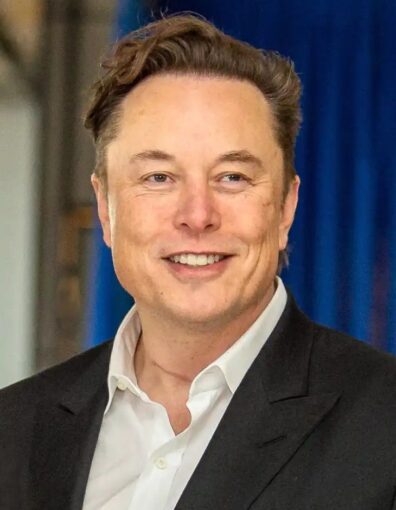The Trump administration has begun an unexpected reversal of one of its most controversial cost-cutting campaigns, quietly moving to rehire hundreds of federal employees dismissed under Elon Musk’s leadership of the Department of Government Efficiency.
The move, which centers heavily on the General Services Administration, highlights how aggressive downsizing left critical gaps in the federal workforce and inflicted new costs on taxpayers rather than savings. It is the latest sign that the Trump administration rehiring drive is attempting to repair the fallout of policies that were once touted as landmark reforms.
For months, Washington insiders have warned that the federal government had been left “hollowed out” by the pace and scope of the Trump administration’s cost-cutting push.
Musk, who was placed in charge of implementing President Donald Trump’s vision of trimming down bloated agencies, spearheaded a blitz that aggressively canceled leases, eliminated offices, and encouraged mass retirements.
But as the dust settled, what followed was mounting dysfunction. The Trump administration rehiring campaign is now being sold as a pragmatic adjustment, though critics call it an admission of failure.

An internal memo revealed that hundreds of General Services Administration employees fired earlier this year have been invited back to their old posts, with a deadline set for the end of this week.
Those who accept must report back on October 6, effectively ending what some critics described as a “paid furlough” that lasted seven months.
During that time, the GSA was forced to maintain properties without adequate staff, driving up costs rather than delivering savings. Real estate specialists close to the agency say the process undermined the very efficiency goals it sought to achieve.
Chad Becker, a former GSA official who now represents landlords dealing with federal leases, described the agency as being stuck in “triage mode.”
He explained that the Trump administration rehiring wave is not a sign of generosity but of necessity, as federal landlords grew frustrated with delayed payments, unfilled contracts, and confusing termination notices.
The image of efficiency collapsed under the weight of what Becker called “too much, too fast.” Even longtime allies of Musk’s effort acknowledge that the drive lacked the basic groundwork to ensure continuity of service.
The Trump administration rehiring push is not limited to the GSA. The Internal Revenue Service has offered to retain employees who accepted resignations earlier in the year, while the Department of Labor and National Park Service have each reinstated dismissed staff.
A pattern has emerged of agencies scrambling to backtrack on earlier purges. What was once hailed as a revolution in government management now looks increasingly like a costly detour.
Democrats argue that Trump’s cost-cutting blitz was more political theater than serious reform, and they are seizing on the rehiring wave as proof.
Arizona Democrat Greg Stanton, who sits on the committee overseeing the GSA, accused the Trump administration of misleading taxpayers.
He said the data shows no evidence that layoffs or canceled leases produced meaningful savings. Instead, the administration created confusion, disrupted government services, and ultimately ended up rehiring many of the same employees it had dismissed.
According to Stanton, the Trump administration rehiring spree proves that Musk’s approach was reckless and ill-planned. “It’s created costly confusion while undermining the very services taxpayers depend on,” he said.
The GSA, created in the 1940s, has always played a critical role in managing federal office space and leases.
With roughly 12,000 employees at the start of Trump’s first term, it was identified as a prime target by the Department of Government Efficiency. Musk and his aides embedded themselves inside GSA headquarters, even sleeping on cots to underscore their commitment to rapid reform.
They envisioned slashing up to half the agency’s 7,500 leases and selling off hundreds of federally owned buildings. Announcements were made about generating billions in savings. But in practice, the plan caused chaos.
Government Accountability Office officials have since confirmed they are investigating the GSA’s management decisions, including canceled leases and planned property sales.
Watchdogs are examining whether the agency incurred massive financial penalties by breaking contracts too abruptly, while simultaneously continuing to pay employees who were effectively sidelined.
The Trump administration rehiring wave has drawn new attention to the GAO probe, with lawmakers demanding accountability for what they call reckless stewardship of taxpayer funds. David Marroni, a senior GAO official, confirmed that findings will be published in the coming months.
For Trump and his advisers, the optics are delicate. The president has long prided himself on being a businessman who runs government like a corporation.
Musk’s appointment was intended to reinforce that image, showcasing bold cuts and a willingness to take on entrenched bureaucracy. But the need for the Trump administration rehiring drive underscores the limits of private-sector style disruption in government management.
Bureaucracies, unlike corporations, are tasked with delivering public services that cannot simply be paused or outsourced. The lesson appears to be that efficiency cannot be achieved through brute force.
Musk himself has remained silent since news of the rehiring drive broke. Sources close to him suggest he is frustrated that his work is being unraveled but acknowledges that some of his proposals may have been too ambitious in scope.
The once high-profile DOGE initiative now faces a reckoning, with many inside Washington privately saying that the experiment has damaged Trump’s reputation as a cost-cutter.
The Trump administration rehiring decision is viewed by many as a political necessity, especially with Democrats pressing the case that Republicans have mishandled taxpayer dollars.
Still, the administration insists that the rehiring drive is not an admission of failure but a recalibration. A GSA spokesperson said leadership was reviewing workforce actions and making adjustments in the best interest of taxpayers.
The official argued that while the initial downsizing created challenges, the long-term strategy remains one of leaner, more accountable government. The Trump administration rehiring campaign, they said, is simply a reflection of that flexibility. Skeptics, however, see a whitewash of mistakes.
The fallout has not gone unnoticed outside Washington. Contractors who do business with the federal government have described unprecedented uncertainty over the past several months.

Some landlords received sudden lease termination notices only to later be told that their contracts might be renewed. In some cases, agencies vacated office space only to reapply for it months later. The Trump administration rehiring plan is being seen by contractors as a tacit acknowledgment that the system broke down under Musk’s blitz.
What remains unclear is the long-term financial cost of this experiment. Economists note that breaking leases, paying severance packages, and then reinstating employees often costs more than maintaining the status quo.
While Trump promised billions in savings, watchdogs believe the final bill may tell another story. For now, the Trump administration rehiring effort has put hundreds of workers back in their jobs, but the broader legacy of Musk’s reforms remains in doubt. Critics argue that instead of efficiency, taxpayers got a lesson in the risks of overzealous disruption.
As October approaches, former employees prepare to return to their desks, many with mixed feelings. Some feel vindicated, believing they were dismissed unfairly.
Others remain skeptical about the stability of their roles, wondering if another round of cuts will come in the future. The Trump administration rehiring campaign has restored jobs but not necessarily confidence.
The larger question for Washington is whether the federal government can balance innovation and efficiency without repeating the mistakes of Musk’s blitz.
For President Trump, the stakes are political as much as managerial. With his administration already under fire for foreign policy crises and economic uncertainty, the last thing he needed was another controversy over wasted taxpayer funds.
The Trump administration rehiring push is a step toward restoring order, but it also serves as a reminder of how deeply unpopular the original cuts were. Whether voters see the reversal as pragmatism or weakness could shape how the story resonates in the coming election cycle.


